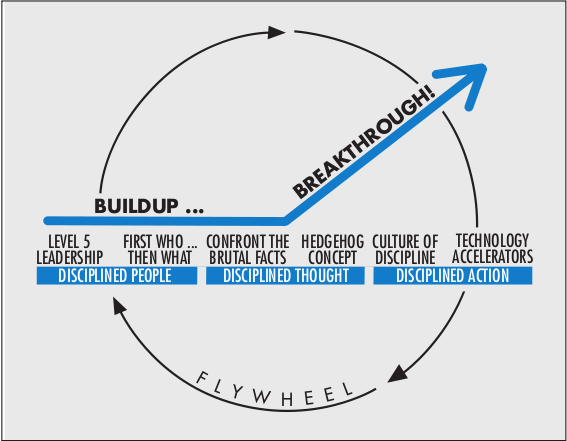In the last part of the series, the focus will be on actions that were taken by disciplined leaders after they engaged in productive, collaborative and disciplined thinking that produced the blueprint for these consequent actions.
Transformation of a company, business or organization from a point of break-even to a point where it achieves market relevance is the dream of every leader. However, this is easier said than done. In his Book ‘Good to Great’, Jim Collins provided a framework for achieving company transformation using the flywheel concept. This was created after Collins studied 28 companies, 11 of which successfully made the leap from ‘Good to Great’.
Collins identified four company transformation stages;
- Disciplined People
- Disciplined Thought
- Disciplined Action
- Building Greatness to Last
 Disciplined Action
Disciplined Action
Culture of Discipline
In this stage, a leader is expected to surround himself with people that can help achieve the founding vision upon which the organization was built. The idea is not for the leader to surround himself with ‘Yes’ people (people who are trying to please the leader and are not necessarily focused on achieving the organizational goal). Rather, the leader makes a deliberate and conscious effort to surround himself with THE right people; people who can take the vision and make it their own, people who can show initiative, act independently and/or with minimal supervision, people who show and exercise discipline in the discharge of their duties and go above and beyond to make things work.
Technology Accelerations
Collins posited that great leaders did not help their companies take the leap from good to great by totally depending on a technology to make that leap happen.
While technology is great and can help organizations hit significant milestones, it is not, in itself, able to ignite the desired shift. Technology, at best, can be used to aid and accelerate the process.
Before technology can be included in the process, the leader has to test it to see that it fits and it works for what it is intended for. It is not enough that the leader adopts it because it is new and popular; if it has no relevance or place in the organization’s development blueprint, then, investing in it is nothing but a waste of organizational resources.
No Comments